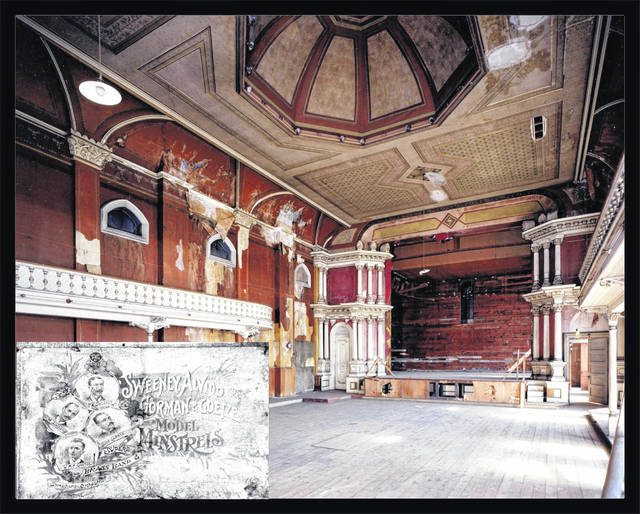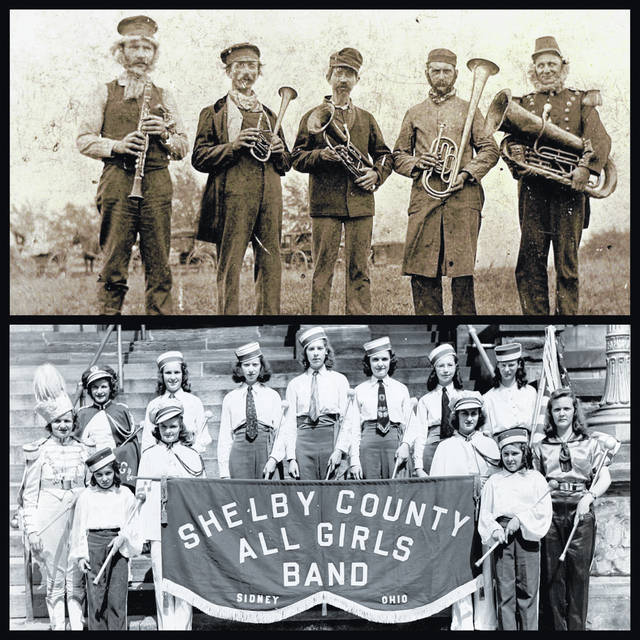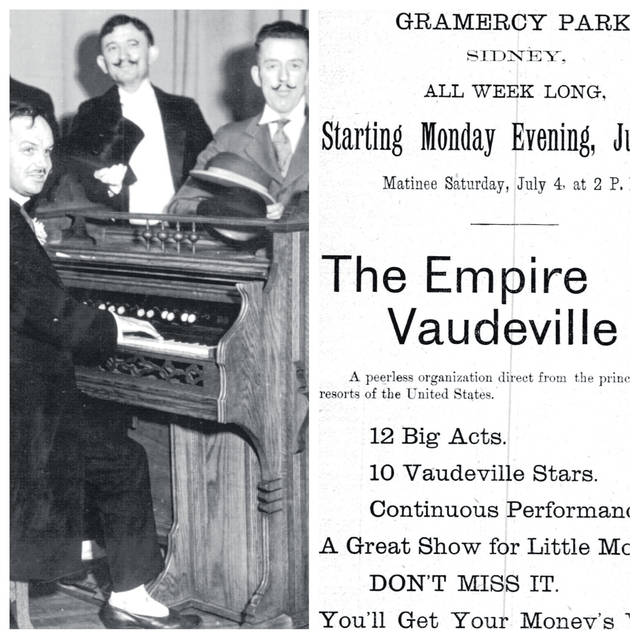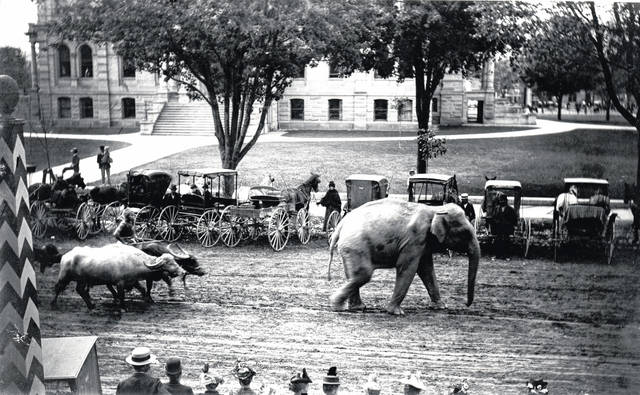




Editor’s note: in conjunction with the 200th celebration of the establishment of Sidney, the Sidney Daily News will be publishing a year long series about the city’s history.
SIDNEY — “Science will get us out of this, but art will get us through this.” Since the arrival of COVID-19, cancellations and closings have taken place at nearly every arts organization across the country, leaving performers without an audience or a venue in which to safely perform. With stay-at-home orders once again back in place, and social distancing the norm, one by one artistic groups in Shelby County have had to eliminate, postpone or reschedule events. A spotlight, however, can be found in the technology that has brought people together, creating virtual ways to entertain both ourselves and others in a manner that our forefathers could never have even imagined possible.
Early artists brought some glitter to area
In the 1800s, Shelby County was like many other rural areas, made up of quiet little settlements rather isolated from the rest of the nation. Pioneers worked diligently from dawn until dusk and had to rely on each other for amusement because there were no movies, television or radio. Families entertained themselves by reading the Bible, telling stories, playing cards or, on special occasions, people gathered together to play music and dance. Other entertainment arrived via peddlers who used their amateur talent to hawk the latest invention or medicinal cure while the arts came to communities through roaming groups of artists, dancers, musicians and performers painting portraits, giving lessons, holding concerts and staging a seemingly unending variety of theatrical extravaganzas.
Marching and concert bands
Robert E. Lee once remarked that without music, there would have been no army. During the Civil War, bands served in many ways, helping to attract new recruits and boosting morale by playing lively music on specially designed instruments, which directed music over their shoulders while they marched in front of the troops. One of Shelby County’s earliest recorded bands, formed soon after the Civil War, was the Haleman (Bunnelle) Band. Bands would give private and public performances, sometimes appearing weekly at a variety of public places as well as playing for important local events, such as the dedication of the cornerstones of the Monumental Building and the Courthouse.
Theater
An influx of immigrants caused Shelby County’s population to grow, and with the Industrial Revolution making life easier, people began looking for ways to spend their newly discovered leisure time. It was during this period that live entertainment’s popularity was at its peak. Locals had plenty of choices from traveling road shows, circuses, novelty/specialty acts, stage magic to music comedy/revue, vaudeville, minstrel and burlesque. While productions were held at various locations and venues throughout the county, countless people attended hundreds of performances given on the top floor/Opera Hall of the Monumental Building from 1877 until the late 1890s. The hall’s official opening took place Sept. 17, 1877, with the play “London Assurance” by the New York Star Dramatic Company.
In order to be successful, show producers tried to attract every cultural background possible by providing low cost entertainment that would appeal to the masses. They were always careful, however, to bill even vulgar humor as moral and respectable with simplistic play scripts that were often religious or patriotic. Show tickets were often sold by local merchants with prices ranging anywhere from 10 to 75 cents, with an extra charge (25 cents) for reserved seating. Newspapers contained large advertisements for upcoming shows, which appeared a few days prior to the production, heralding the excellence of the event. One such ad appeared in the December 1881 issue of The Valley Sentinental, encouraging Shelby Countians to purchase tickets at McKee’s Jewelry Store for the “Famous Scout, Hon. Wm. F. Cody” (Buffalo Bill) show scheduled at Monumental Hall.
The Monumental Building Opera Hall seated several hundred people but closed as a performance facility in the 1890s when it was found to be in violation of state fire codes. Shows also were held in Sidney’s other opera house, located on the top floor of the Taylor Building (now razed, it was located immediately north of the Courtview Center on Main Street). Vaudeville sketches were extremely popular from the 1890s until the 1930s, and Eddie/Rosa Phillips, of Anna, performed on the medicine show circuit in the late 1920s, traveling through a four-state area pitching products.
While groups of local performers put on a variety of productions for special events, one of the first permanent community theater groups to entertain Sidneyites was The Sidney Theatre Guild. Started in 1936, this group’s shows originally were held at the old Sidney High School (Bridgeview, now razed) but later moved to what is now the Historic Sidney Theatre in order to accommodate larger crowds. The group briefly disbanded during World War II but continued its productions until its last season in 1952-53. Twenty years later, another community theater group, Sock & Buskin Players, was formed in 1974, showcasing local talent and has produced more than 100 shows in the region to date.
Opera
Up to the middle of the 20th century, traveling groups regularly brought a variety of operatic offerings to Sidney. As with other art forms, not all events were well attended, as noted in the 1880 Sidney Democrat article, “Miss Hunt has a splendid voice…but however well she may be able to render Italian operas we object to singing in any other than our native tongue…English…is good enough for us.” Local girl Sadie Rosenthal (Sonya Rozanne Gilfer) achieved operatic fame in European theatres and on the East Coast of the U.S., performing from the 1920s through the early ’40s, returning to live in Sidney after World War II. More than 1,400 citizens attended a two-day event by the Sidney Community Opera-Arts Guild in 1973, and former Sidney resident Victoria Blanford established a now disbanded operatic group, the River Glen Ensemble, in 1993.
Singing groups
The art of blending human voices into song is ageless, and through the years, many clubs and organizations have offered a variety of singing performances. In 1912, the Weekly Republican announced the formation of the T.T.T. Glee Club and noted that “when one can sing and has talent for music they are admitted into the best society and…are always in demand.” The Harmony Octette sang together for several years while the Colonial Singers appeared in colonial style costumes. The Shelby County Granges had a large chorus and the Sidney Music Club was active for nearly 30 years. Starting in 1968, the All American City Chapter of Sweet Adelines taught members the American folk art of singing four-part harmony barbershop style and organized in 1931, the Singing Soldiers were formed from American Legion members, comprised entirely of World War I veterans, then supplemented by World War II veterans under the direction of Frank Fahrer.
Artists
The earliest activity for painters in America was painting signs and furniture as well as a portrait or two. Traveling through Ohio’s countryside, these artists sought commissions from patrons and taught aspiring young artists the craft of painting. In 1883, the Valley Sentinental praised the efforts of a local artist, “Clark Cox, the Scenic artist, is doing some fine work at the Monumental. The landscape scene on the drop curtain is an excellent example of the skill of the painter.” Local artist Mila Hamilton has continued this tradition, painting wonderful large scale backdrops for community theater and dance productions and recently refreshing the appearance of Sgt. Baker located on the North Ohio Avenue/exterior of the Monumental Building. A dire prediction was made in the 1912 book “Modern Paintings;” “in fifty years, there will be no art…because we are at the end of an artistic age.” In 1922, the Music and Art Club attracted more than 200 persons to the home of B.P. Wagner to view the outstanding collection of art gathered for display. Today, works of all types are regularly on display at the Gateway Arts Council Visual Arts Gallery as well as at the Amos Memorial Public Library.
Arts Council
Founded in 1988, the Gateway Arts Council’s seed money was provided by one of the area’s oldest cultural organizations, The Shakespeare Club, established in 1887. Showcasing performers is not a new idea in Sidney, with groups such as the Sidney Community Concerts Association spearheading a “Here in Person” concert series in the 1940s that brought national and international artists to the city including a visit by the Von Trapp Family Singers. What grew out of an ever-growing family gathering, the Country Concert in Fort Loramie will celebrate its 40th season in 2021, featuring some of America’s finest country singers and drawing tens of thousands of fans to the area each summer.
Dance
American dancing originally was centered in the home and community with Dancing Masters circuit riders who traveled throughout the U.S. teaching dance from European manuals. Local Helyn Hobby Spinner was a member of the Dancing Masters and organized/taught the cotillion (ballroom dancing and etiquette lessons) for 41 years. A 1949 Sidney Daily article announced, “A treat…Helyn Hobby Spinner’s school of dancing pupils are to perform at Warner Ohio theatre.” Through her dance studio, Spinner formed a group of advanced students called The Spinnerettes who performed in a variety of cities. One of Spinner’s students was Sharon Eikenberry, who founded the Sidney Dance Company, a pre-professional training company for youth that she began in 1980 as a repertory dance group. Today, they provide study and performance opportunities for local dancers, offering one or two major productions to the community a year. Several of Eikenberry’s students have gone on to perform professionally as well as opening their own dance studios.
While the curtains are temporarily drawn on most live performances, whether you are a student appearing in a high school drama production, taking dance or music lessons, or an adult singing in a church choir or performing on stage, Shelby County’s arts groups have always offered many opportunities for performers and audience members alike.






